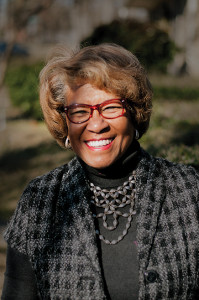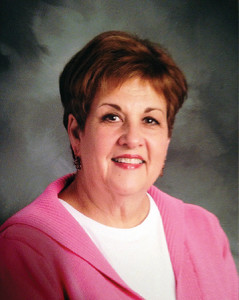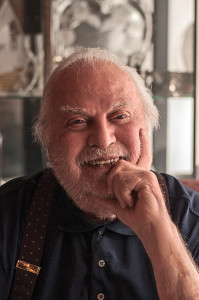Memories of the March
Posted on February 28, 2015 by bob in Features
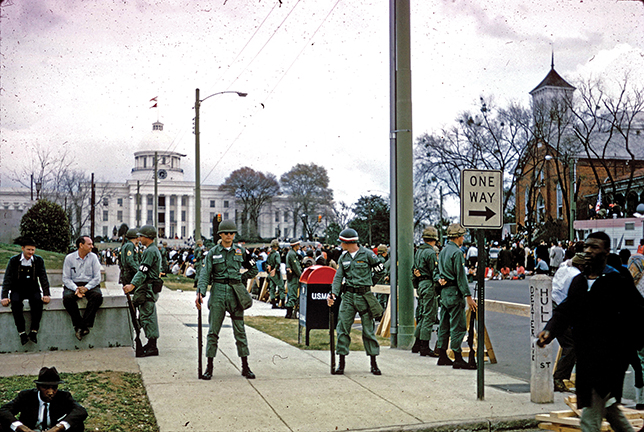
National Guardsmen stand along the final stretch of the Selma-to-Montgomery march, which terminated on the steps of the State Capitol. (Photo courtesy AL Dept. of Archives and History. Photographer unknown.)
Compiled by Sandra Polizos
For many area residents memories of the Selma-to-Montgomery March are personal. Living in and around the Capital City in March of 1965, they were in the midst of a momentous news story which led to groundbreaking changes in American society. Viewed from a variety of vantage points, current and former area residents recall their memories of both the period and the history-altering event.
==================================
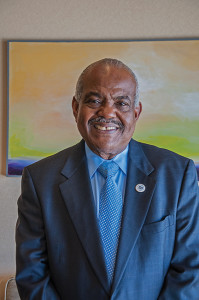
Harold Boone, a Tuskegee high school sophomore in 1965, is Vice President for Minority Business Development & Leadership Programs for the Montgomery Chamber of Commerce.
My parents were very excited, but they wouldn’t let me come to the march. I wanted to be there, but they said, “Absolutely, no, it’s too dangerous. You’re not old enough. You’ll get your chance.” I shouldn’t say I’m disappointed. I think it was a great opportunity to be a part of that history, but I was in my own way, in terms of supporting the ideology of what we were trying to do in that march.
I remember vividly a busload of college students and some high school students coming down to Montgomery from Tuskegee to participate. And we had rallies on the campus in preparation for it. Tuskegee, at that time, was the black educational mecca of the South, at the University and the high school. My teachers were telling us it was a pivotal time in history. They were very dear mentors in teaching you what was going on not only in Tuskegee but in the whole world, and they were saying, “It’s pivotal. This is monumental in terms of your rights and these people — you’re going to be standing on the shoulders of these people who are making a difference.”
The whole world was watching on tv, including myself, and we all had the same feelings — about the civil rights struggle, the right to vote, and the right for equality. It was a big deal. We lived through it. It was an important step.
I plan to be in the march this year. I will be marching from St. Jude all the way to the Capitol. This will be the first time.
==================================
I didn’t march all the way from Selma to Montgomery, but I did join the protesters at the end of Dexter Ave. I was a young college student at Tuskegee at the time and gained the courage to walk from the strength I felt from all the others around me. As I strutted pass Kress and H. & L. Green stores, I noticed the whites who were staring and mocking us from the sidewalk….but I kept looking forward. But, when we reached the Capitol steps, I saw nothing but billy clubs. I knew the state troopers were there to protect us, but I also feared they were there to harm us. The speeches and the singing though went on uninterrupted.
As a TV news reporter, I have looked out of the window in the Governor’s office several times and realized there is a clear view from there of the front of the Capitol. I wondered, did Governor George Wallace see us there? What on earth was he thinking at the time? And, did he not understand then the passions of people who just wanted to be respected and treated fairly?
I won’t go to see movies like “The Butler,” “12 Years a Slave,” and “The Rosa Parks Story” because they touch on wounds that still have never healed. I did see “The Help” but I was not laughing like others in the theater. I was aching. I kept delaying my move back home to Montgomery, even though my parents were ill, because I was uncomfortable facing the pain that would be around every corner. However, I’m back now and have been surprised to find out that the memories of the uplifting times have been resurrected too.
==================================
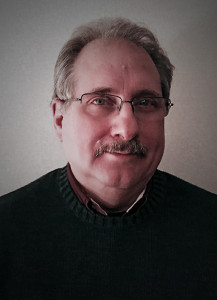
Mike Manos, born and raised in Montgomery, lives in Anniston and works in the corporate office of an Anniston retailer
A black seamstress walked from her job at Montgomery Fair to catch a bus in front of the Empire Theater on a cold December evening in 1955 to go home. Instead she went to jail. The die had been cast and history was in motion in this sleepy little southern city.
High school, band, work at the Empire Theater after school, and hanging out with friends took up most of my time as a teenager. Most of us did not know exactly what to make of the unrest, and listened with interest to reports on WSFA, and in the Montgomery Advertiser. To us separate but equal seemed to be reasonable. Yet, there was something about seeing mounted state troopers riding through black protesters with clubs flying, freedom riders beaten at the bus station, and seeing a group of grown white men surround a church, turning over cars, and setting them ablaze which made me question the system in place in Alabama, and the south — where people were denied the right to a good education, and denied the same public water fountains, restrooms, or the ability to use a city-owned park for their family. Vietnam was starting up, and young men, both black and white were joining the service, or being drafted.
I was in San Diego enrolled in a school training to be a navy radioman when news came about Bloody Sunday in Selma. My instructor, a black chief petty officer, brought it up in the class on Monday after Martin Luther King finally led the march successfully to Montgomery. Looking me in the eye he asked, “Manos, have you crossed that bridge?” At the time I did not know how to answer his question.
“Yes, Chief Polite, I have crossed that bridge.”
==================================
I remember the news reports saying history was being made right outside my doorstep, but in my own daily life I saw and heard nothing about what was happening. I was a thirteen-year-old student, attending a jr. high school located less than five miles away from the state Capitol. Those days during March, 1965 were uneventful at my school — just regular, boring school days as far as I was concerned.
When I got home from school and watched the national news, I was presented with a totally different picture of life in my hometown. I was very confused as to how so many chaotic, but seemingly invisible things could be happening in Montgomery. Was this stuff about the march being made up?
I believed it was happening, and felt I understood why it was happening. I remember the separateness of the races—segregated schools, no mixing of races at restaurants, movie theaters, and swimming pools, water fountains marked white and colored, etc. And I knew things were changing. The 1960s was the decade of change and cultural revolution. It was evident everywhere. Voices were being raised, songs were being sung, blood was spilled, and rules that seemed to have been written in stone for centuries now seemed to be crumbling. I just didn’t understand how such a monumental historical moment could be happening where I lived and I couldn’t see it or hear it in my everyday life.
==================================
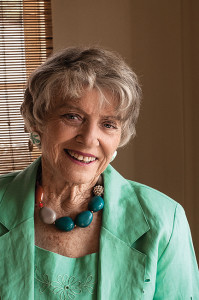
Dot Moore, a former school teacher and activist in the Presbyterian Church, is retired and volunteers for
a local hearing loss support group.
My family and I watched the television on March 7 and were horrified at what we saw. We soon learned that the nationwide coverage showed the terrible events of what was later known as “Bloody Sunday.” The national news continued to cover events until March 25 when the march culminated at the state Capitol.
Many of our neighbors and some friends became alarmed. Rumors of indecent behavior of the marchers were heard every place. One neighbor, a pediatrician, was to visit patients in local hospitals. His wife came to us begging us to plead with him not to go out at night. Little did she know of our involvement.
On March 25 when the large number of supporters arrived at the state Capitol, Martin Luther King stated that “clergymen and laymen” were participating. As a Presbyterian I was so very pleased that the entire senior staff of the national office of the Presbyterian Church was participating. A faithful church member provided the staff with her very large house in south Montgomery. My closest friends and I arrived each day bringing them food. We were glad to be supporters of their efforts and participation.
I did not march nor attend the events. I believed then that those participating were standing for us who shared their beliefs but were fearful of economic reprisals and possible physical and/or emotional harm for my family, including my children.
==================================
I remember the march but I did not take pictures of the march. I had taken pictures for seven years, for Life Magazine and for newspapers all over the United States, but by then I was out of the newspaper business.
I was standing on the balcony of the Jefferson Davis Hotel at a Lions Club meeting when we heard some commotion and the Lions went out on the balcony. And here, coming down the road, it looked like 10,000 black people. It was the march. We watched it come down and go on down towards the Capitol. Later, when the magazine Freedom came out, there was a picture of the Lions Club members standing out on the balcony of the Jefferson Davis Hotel. Somebody in the march had taken a picture.
When the meeting was over I got in my car and drove up towards the Capitol but it was too crowded and I just drove back to the studio. I thought, where in the world did these thousands, and I mean thousands, of people come from? The lines were 7, 8, 10, 12 folks wide, and the closer the march got to Montgomery, the more folks joined it. By the time they got to the Capitol, I don’t know, there were 25-30,000 probably there. It was impressive.
==================================
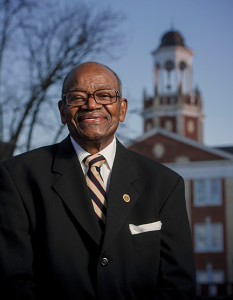
Dr. Ralph Bryson was an English professor at Alabama State University for 59 years, where he retired as head of the English Department.
The Selma to Montgomery March gave me a sense of liberation, of accomplishment, of having overcome a great hurdle. There was no use in trying to hold classes when the marchers came up Dexter Avenue. In fact, along with other faculty members I was there myself, sitting, waiting for the marchers and feeling the elation that all of us felt. It was not a holiday, of course. Perhaps some of the folks thought we should go on and have classes, but that was just an idle thought because the students were having nothing to do with that. A number of us, including myself, said there’s no sense in taking roll today. We were there to join the throng in the area between Dexter and the Capitol as the march culminated at that point.
I thoroughly enjoyed seeing James Baldwin sitting on one of the buttresses at the entrance to the state Capitol. Having taught and discussed his essays about segregation and civil rights, it gave me a sense of satisfaction and I’m sure that’s the same kind of feeling that James Baldwin himself had. I did not have a chance to have a conversation with him but that is an image I recall vividly. Nina Simone and Harry Belafonte were at St. Jude’s for the culmination of the march the evening before and I always think of Nina Simone and some of her songs that I remember from that time.
==================================










